These stunning photographs of brown bears were all taken by Dutch photographers David Hup and Michiel Van Noppen, and document the delicate balance between humans and bears in Romania's Carpathian Mountains.
As more of their forest habitat is depleted, more and more bears are coming into towns and villages to find a meal. Thes epictures tell their story, and that of the Romanian people's relationship with their ursine neighbours.
Trip into town

An old male brown bear sneaks through a broken fence in a Transylvanian village to search this garden for food. Romania’s stretch of the Carpathian Mountains hosts around 6,000 brown bears – Europe’s largest population outside Russia. As the fragmentation of their forest habitat continues, they increasingly explore urban areas.
Junk food
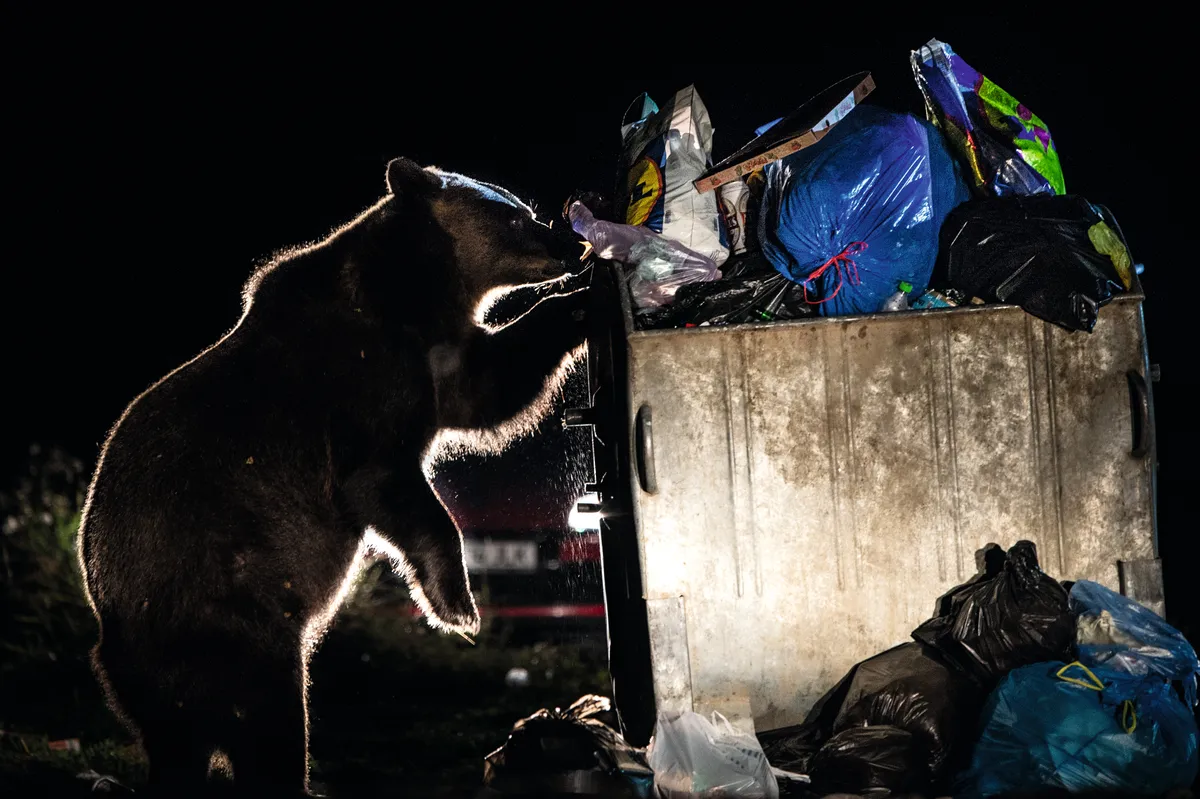
A furry visitor to a small town in the Carpathians indulges in some dumpster diving, tipping an overloaded bin in the hope of finding something edible. “Bears are creatures of habit,” explains photographer David Hup. “For example, they inspect bins in a specific sequence each night.”
Nosy neighbours
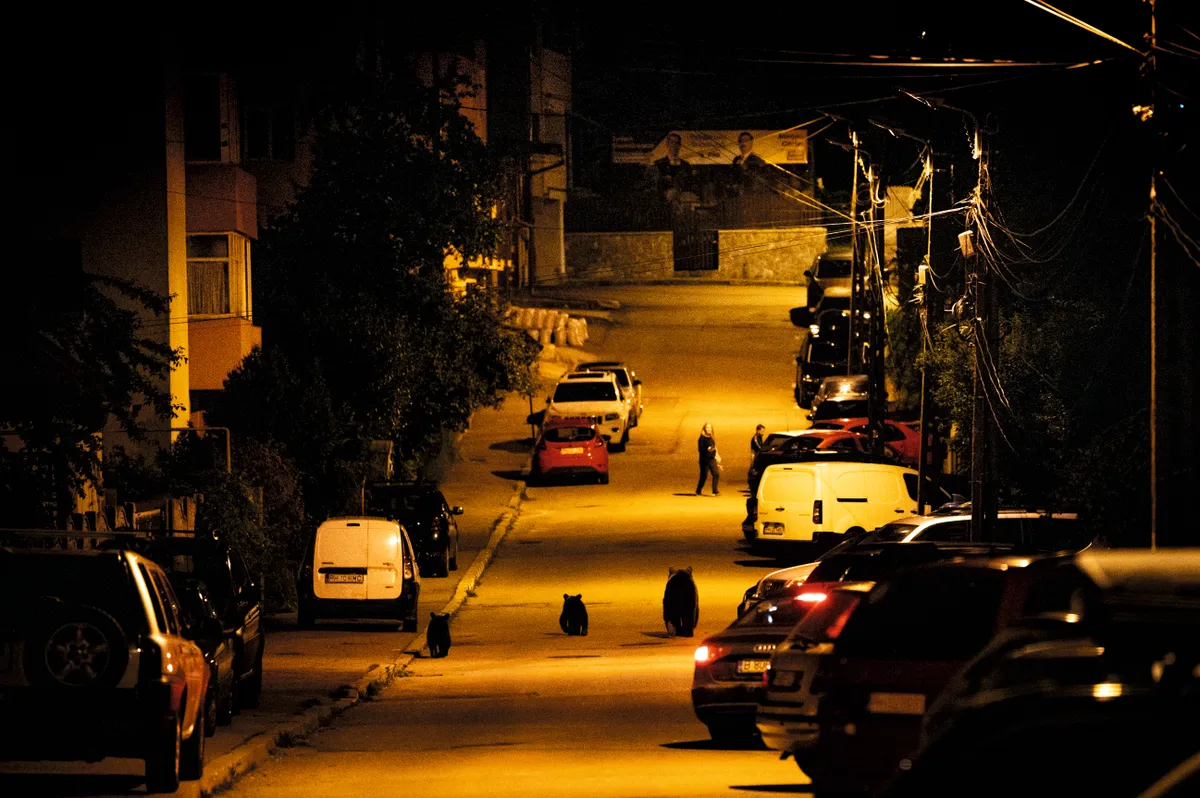
A mother leads her cubs through a Transylvanian town, while two people approach their car farther up the street. Urban residents are becoming accustomed to these encounters, which are risky for both species. Bear attacks on humans, usually involving hunters, gamekeepers or shepherds, are increasing and bears are sometimes hit by road vehicles and killed.
Under the ridge

The Bucegi Mountains loom over a small town in the southern Carpathians (left). Bears frequently descend from the peaks’ forested flanks into such towns in search of food, often breaking fences, raiding rubbish bins and destroying crops, leading to conflict with local people.
Trunk road
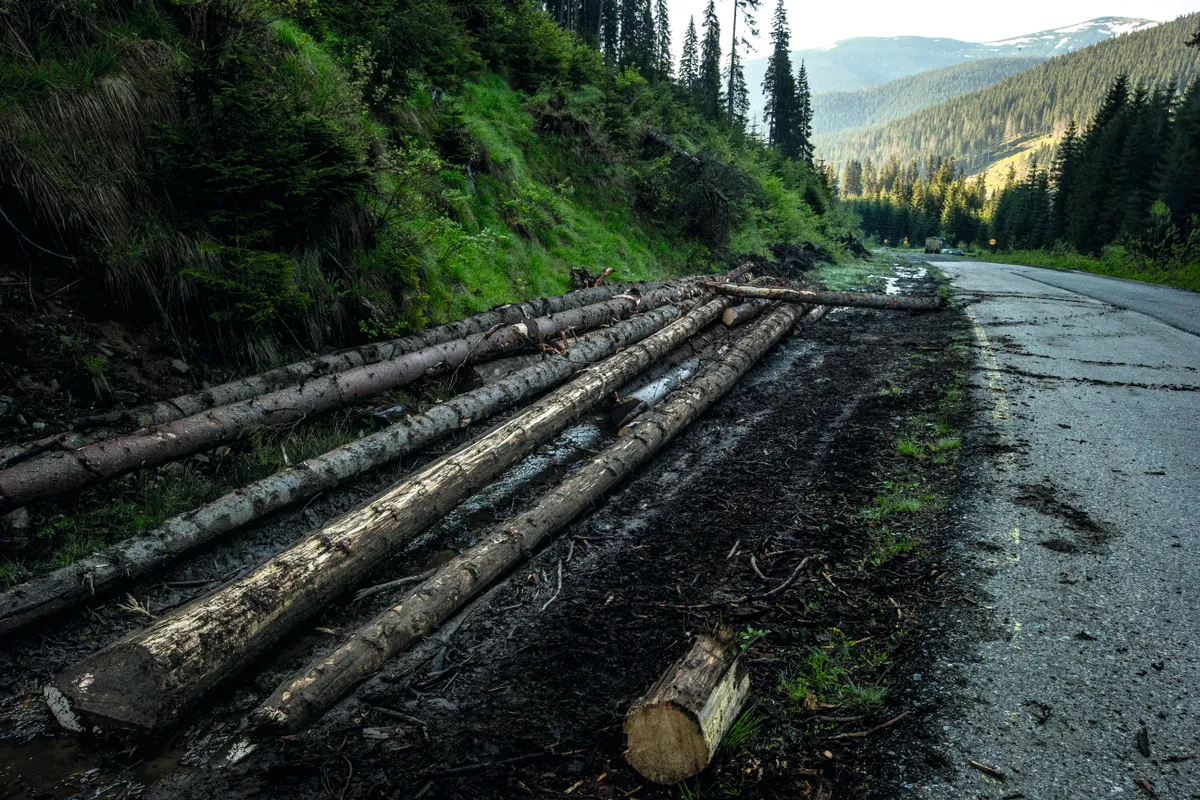
Logs lie stacked alongside a road in Transylvania – a common sight throughout the Carpathian Mountains (right). Though nearly one-third of Romania’s land is covered by trees, logging is reducing the brown bear’s natural forest habitat.
Dance macabre

Revellers don skins decorated with bushy, bright-red shoulder tassels for the traditional Bear Dance in Comănești, on the north-eastern slopes of the Carpathians (above). This ritual is performed in many of the region’s towns and villages during the last days of December to fertilise and purify the soil, chase away evil spirits and welcome the new year.
Paws for thought
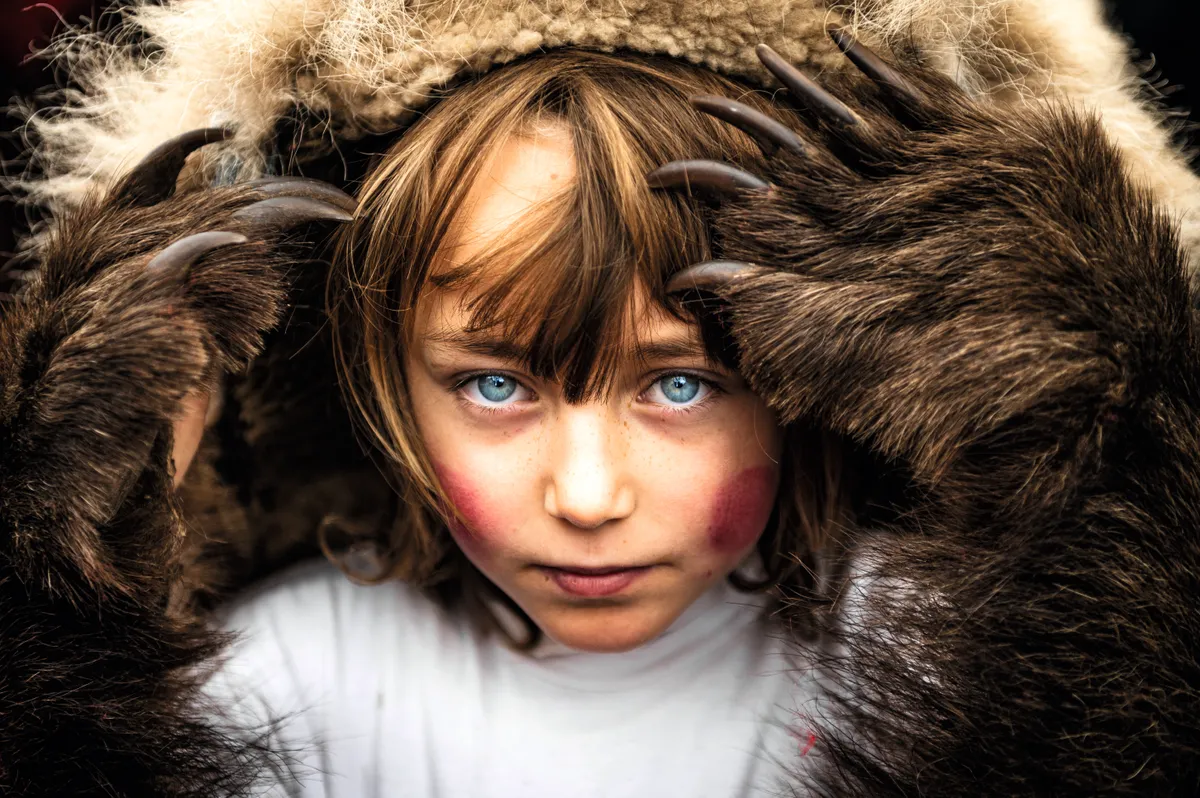
Even young children, such as this blue-eyed girl in Onești (left), join the dance, despite the weight of the pelts – up to 50kg. The people here also have to become accustomed to the presence of live bears in their town.
Snout and about

A large female is snapped by David and Michiel’s camera-trap in one of Romania’s forests. In the wild, omnivorous brown bears adapt to the seasons: they eat honey, insects, reptiles and mammals when they can, plus grass and shoots in spring, berries in summer, then fruit and nuts in autumn, all to lay down fat ahead of their winter torpor.
Two's a crowd

Romania’s bear population almost doubled during the nearly 25-year dictatorship of Nicolae Ceaușescu, reaching an estimated 7,500 by the time he was deposed in 1989. Forests were managed and extra food provided for bears, which only the despot and his guests were permitted to shoot. Today, this female and her cub (above) are among thousands competing for limited wild habitat and food.
Wild at art

A Romanian man displays his bear tattoo, reflecting the complex relationship people here have with their ursine neighbours. Though bears come into conflict with farmers and other residents, Romanians see them as a long-standing part of their way of life.
Herd instinct

Dogs bred and trained to guard livestock are extremely aggressive – and they need to be. As this shepherd beneath the Făgăraș Mountains (above right) knows only too well, hungry bears and wolves frequently target sheep in Romania.
Relics of the past
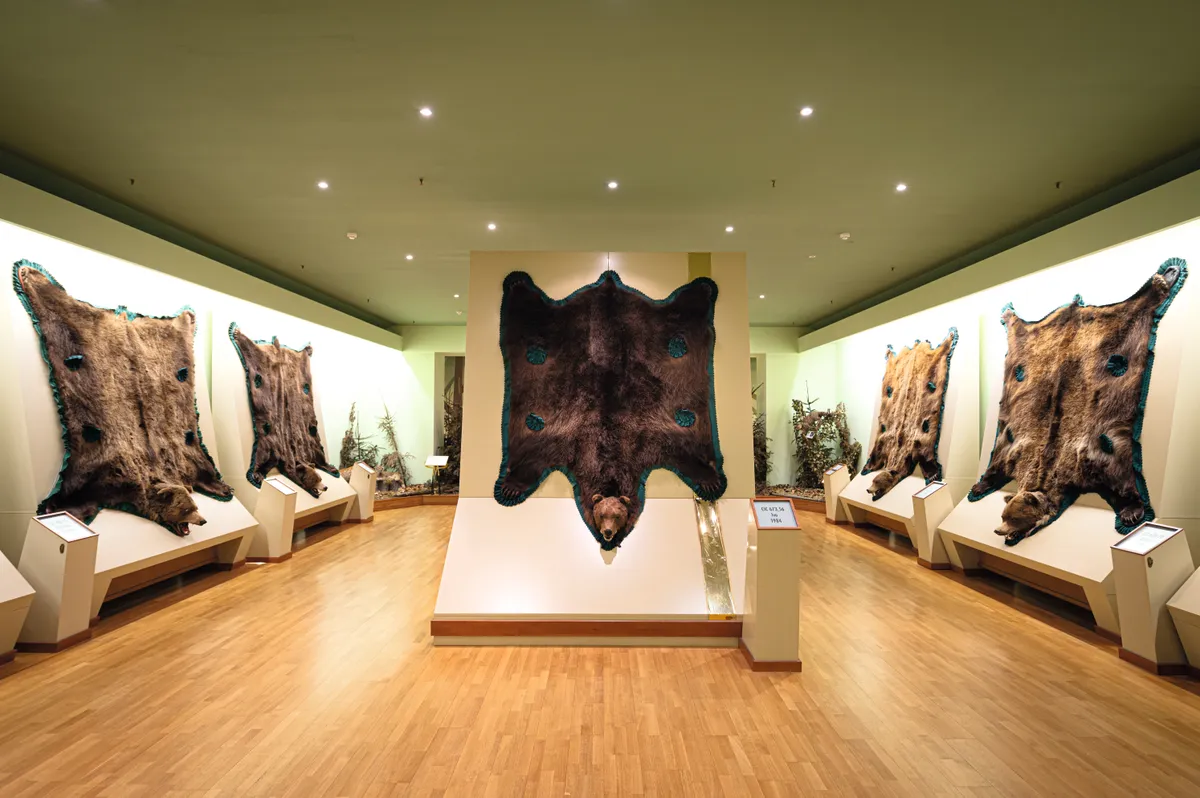
The pelts of huge bears – many reputedly shot by Ceaușescu himself – line the walls of the Hunting Museum in Posada (right). Trophy hunting of bears – as well as wolves, lynx and wild cats – was banned in Romania in 2016, although small numbers can be shot each year to protect crops, livestock and to ensure public safety.
Bear baiting

“We heard of a place where bears emerge from the forest to tip bins and find food, and where they are now fed by locals, who gather to enjoy the ‘entertainment’,” David reports. “When I arrived, I found dozens of people drinking, shouting and lighting fireworks, waiting for dusk and the bears to come.”
Safe sanctuary
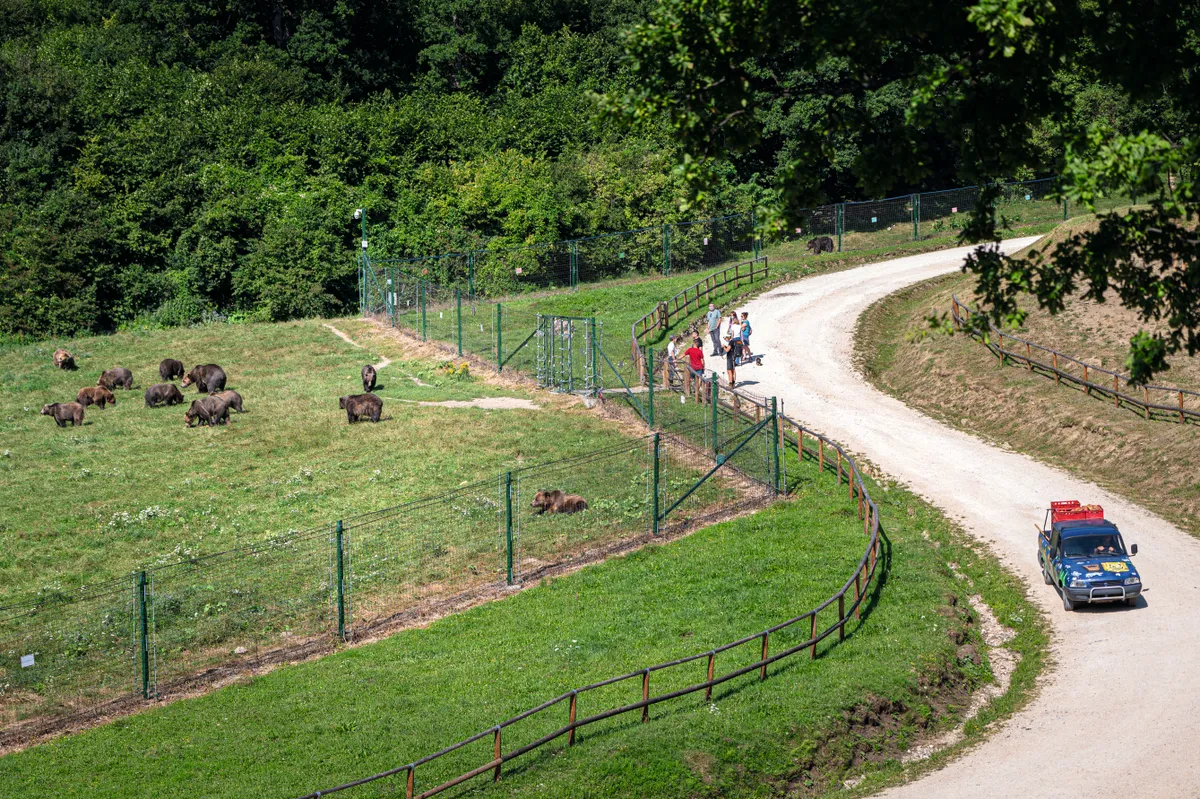
Libearty, near Zărneşti in south-east Transylvania, is reputedly the world’s largest brown bear sanctuary. It hosts more than 100 animals in near-natural wooded enclosures (left). Most have been rescued from terrible conditions in captivity.
Grave situation

The growing incidence of bear incursions into residential areas leads to such surreal images as this individual crossing a cemetery (above), en route from its forest home to a foraging session among the houses. The appropriate way to manage Romania’s bear population is hotly debated, particularly since attacks on humans have become more frequent in recent years.
Green shoots of hope

Organisations such as Foundation Conservation Carpathia work to restore areas degraded by logging. These nursery-grown saplings (right) will be planted in logging sites in the Făgăraș Mountains. Expanding the area of forest and, therefore, the availability of wild food, should reduce bear incursions into towns.
About the photographers

David Hup is a photographer from the Netherlands who documents our interactions with ecosystems. davidhup.com

Michiel van Noppen, also from the Netherlands, specialises in ecology and conservation. michielvannoppen.com





